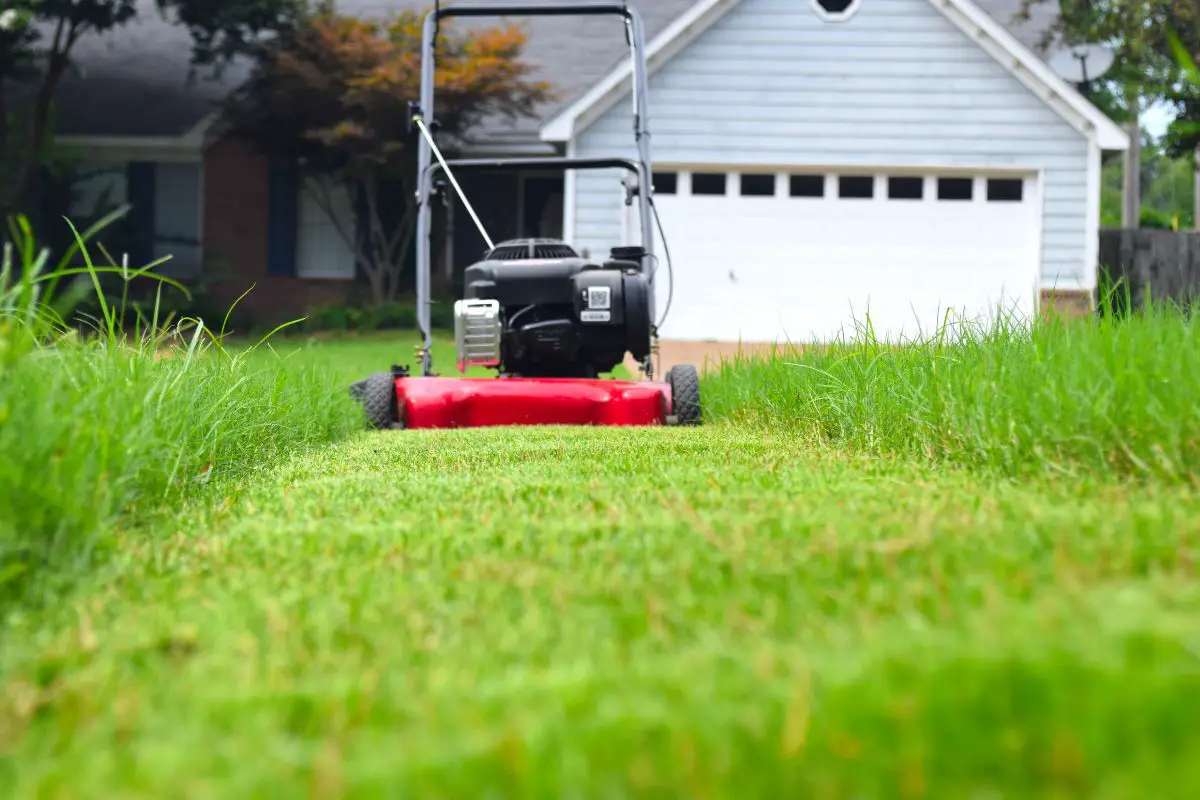Here in the US, we sometimes experience significantly high temperatures throughout the year, especially in certain parts of the country.
Of course, it’s important for people to stay cool and hydrated during these times, but the heat can also affect your lawn.
Your lawn is a living species, meaning that when the temperature rises, the moisture lowers, leaving your grass dry and thirsty.
These dryer spells can affect the health of your lawn, and to avoid any more deterioration, it’s important to know how hot is too hot for mowing.
In this article, we’ll tell you the best times to mow your lawn during the summer and when it’s too hot to mow your lawn.
We’ll also go through some precautions you should take for your health and your lawn’s health when caring for your lawn during high temperatures.
When Is It Too Hot To Mow The Lawn?
Your cool-season grass may start to struggle as the temperature rises beyond 80°F. In addition, slowing down growth and fading the vivid green color of your grass are two effects of prolonged high temperatures.
In fact, during the hot summer months until early fall, several cool-season types of grass will become dormant.
It’s advised that you avoid mowing your grass during a heat wave, which is a prolonged period of exceptionally hot weather lasting more than two days.
Ideally, you should mow your lawn when the temperature is between 40°F and 80°F, during the cooler times of the day.
How To Mow The Lawn In The Summer
When it comes to what time of day you should mow your lawn, you should avoid mowing between midday and 3 pm, when the sun is at its highest and its outgoing heat is at its peak.
The best time to mow your lawn is during the evening when the heat has passed and the sun is setting.
Summer mornings are also significantly cooler, however, this is the best time to water your grass rather than mow it because it will help your lawn withstand the heat of the day and protect it from heat stress.
When you mow your lawn, you should cut your grass higher than usual to make sure it stays healthy and thick. When the days start to get hotter, raise your mower’s blades so that your grass is standing between 3 and 4 inches tall after it has been cut.
This will help your lawn develop a deep root system so it can access more water and nutrients in the soil during the summer.
It is also recommended that you mow in different directions, changing up the pattern every time you mow your lawn.
Mowing in the same direction every time you cut your grass can cause the blades to grow at an angle, meaning that one side will get more sunlight than the other. Changing direction will allow your grass to grow straight up and even on all sides.
Your lawn’s mowing schedule will vary depending on a variety of factors. For instance, mowing every 4-6 days might be enough, but you won’t need to if your grass is suffering from heat stress or has gone dormant.
The most important thing is to refrain from removing more than one-third of the blade at a time.

Precautions You Should Take
Mowing your lawn is perfectly fine during the summer months, as long as you do it right and do so at the right temperature.
However, there are some precautions you should take when mowing during high temperatures to ensure your health and your lawn’s health.
Your Health
Heat stroke is a life-threatening condition. You can develop this physical condition if you exercise in the sweltering heat.
While there are many symptoms, some of the more prevalent ones include fatigue, nausea, lightheadedness, and profuse sweating. Heat exhaustion and heat stroke can have fatal repercussions if ignored.
While mowing your lawn, if you start to feel the effects of the hot weather, we advise stopping all activity, moving to a cool place, resting, and drinking lots of water. It might not be too hot for your lawn to be mowed, but it’s definitely too hot for you.
Evaluating Your Lawn
Heat can harm grass just like it can humans. This outcome frequently manifests as dormancy.
In the late fall to early winter, warm-season grasses like Bermuda and St. Augustine will go dormant.
The grass is responding to the cooler soil temperatures at this time of year. In the summer, if your lawn starts to enter dormancy, it’s likely due to heat stress or drought.
When grass blades start to dry up from the top down and your yard starts to become a hazy shade of brown, that’s one indicator of heat stress or drought in a lawn.
When this happens, your grass will feel crunchy to the touch when walked on, and a clear footprint path will be left. Due to the extreme heat, the grass is in such bad condition that merely touching it causes the blades to break.
If your grass becomes dormant in the summer, it may be too hot to mow it, or at the very least, it may not be necessary. The good news is that your grass can thrive in the summer with the right watering regimen, nutrients, and sunlight.
Final Thoughts
It’s important to pay extra attention to the condition of your lawn during the summer. The high temperatures mean that your grass can experience heat stress and dormancy.
To ensure that your lawn stays healthy, follow this guide and use our top tips for mowing your lawn during the summer.


